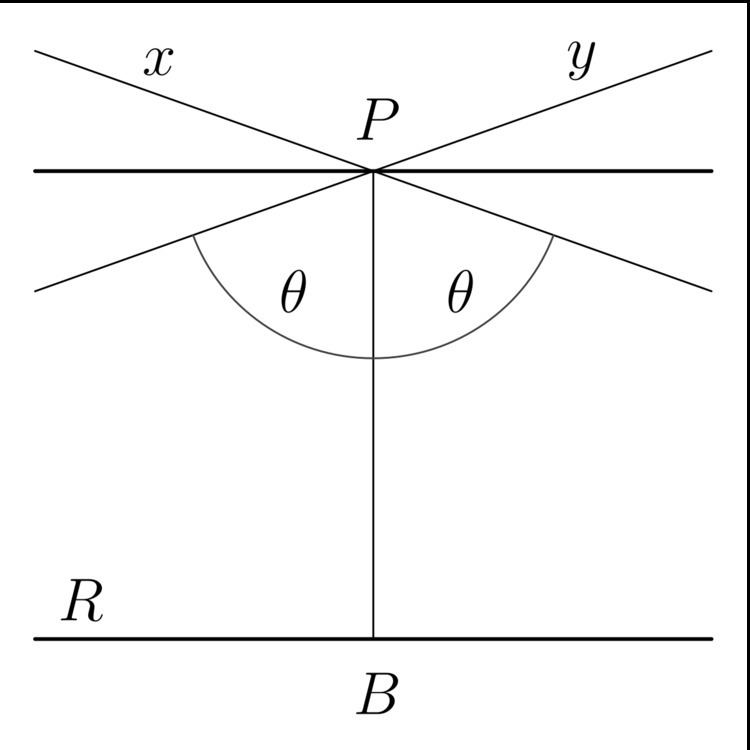 | ||
In neutral or absolute geometry, and in hyperbolic geometry, there may be many lines parallel to a given line
Contents
Thus it is useful to make a new definition concerning parallels in neutral geometry. If there are closest parallels to a given line they are known as the limiting parallel, asymptotic parallel or horoparallel (horo from Greek: ὅριον — border).
For rays, the relation of limiting parallel is an equivalence relation, which includes the equivalence relation of being coterminal.
Limiting parallels may form two, or three sides of a limit triangle.
Definition
A ray
Properties
Distinct lines carrying limiting parallel rays do not meet.
Proof
Suppose that the lines carrying distinct parallel rays met. By definition the cannot meet on the side of
